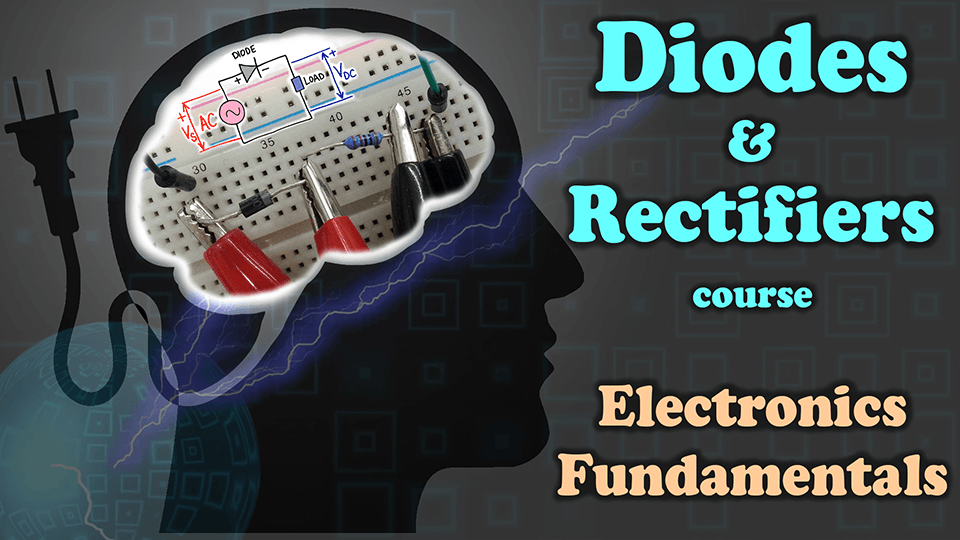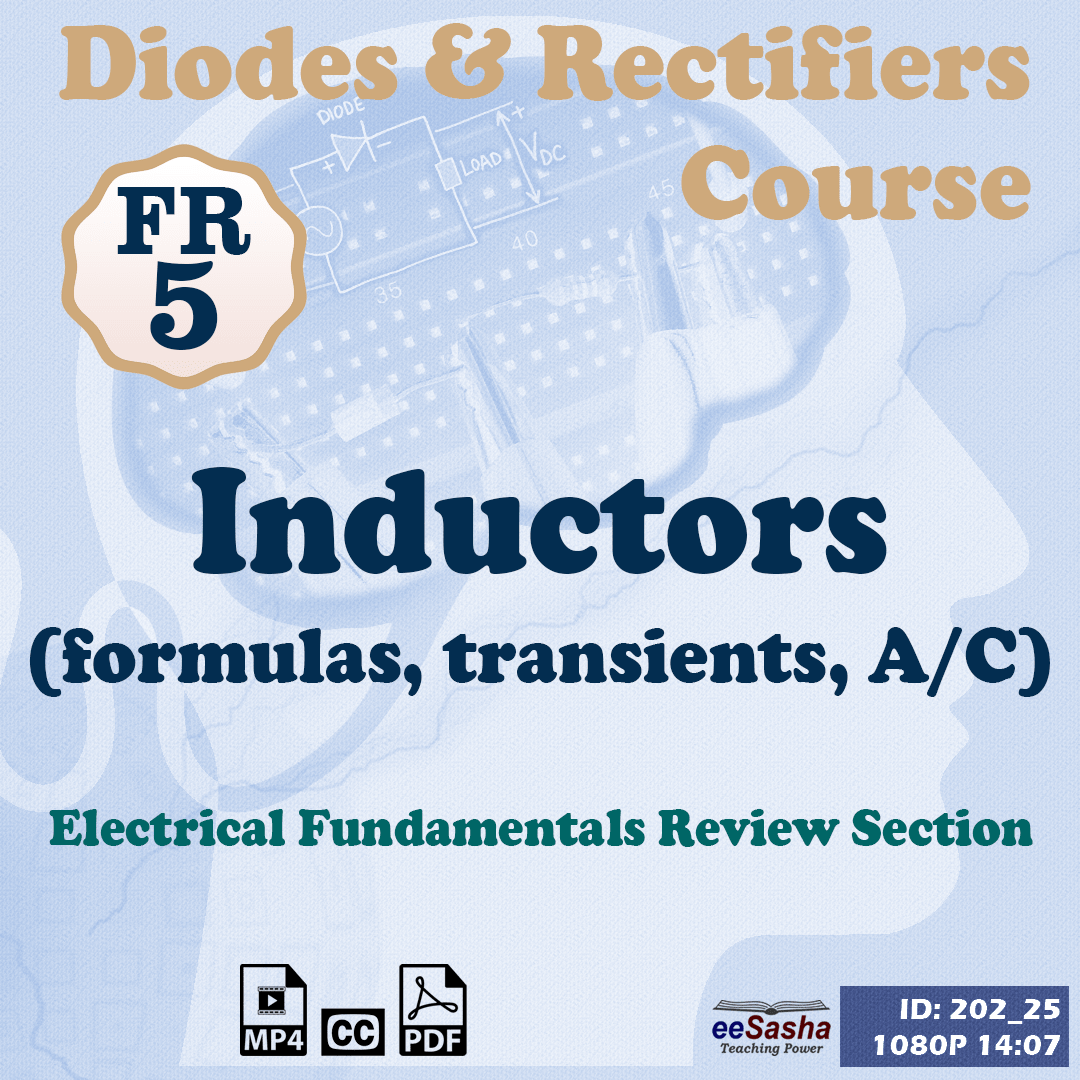Inductors
$9.40
Inductors Video Lesson
Description
Inductors Video Lesson
Video Lesson from Electricity Fundamentals Review Section of Diodes & Rectifiers Course
The review of fundamental electrical engineering components and concepts:
- Inductor as an energy storage component
- Formulas that describe inductor behavior
- Transients processes that involve inductors
- Inductor over-voltages and their ability to spark!
- Inductors during steady state
- Inductive reactance of inductors in A/C circuits

Electronic Product Information
| Lesson Title: | Inductors |
| Part of a Section: | Electricity Fundamentals Review |
| Part of a Course: | Diodes & Rectifiers Course |
| Published: | September 2020 |
| Author: | Sasha Jakovljevic |
| Instructor: | Sasha Jakovljevic |
| Duration: | 14:07 min |
| Quality: | 1080P HD |
| Contents: | .mp4 Video file .srt Captions/Subtitle file .pdf Resource Slides |
Detailed Product Information
Inductors (14:07)
Another very important electrical component is called an inductor. Inductors are used in various electrical circuits, from small appliances and all the way to large power engineering apparatus (for example motors and transformers). We mention inductors on several occasions in Diodes & Rectifiers course so we also need to review fundamental concepts related to inductors. In this video lesson, we cover necessary knowledge needed to understand inductors:
- Inductor as an energy storage component
- Formulas that describe behavior of inductors
- Relevant inductor related electrical quantities
- Transient processes that involve inductors and
- Inductive reactance of inductors in A/C circuits
We introduce inductor as an energy storage component first. We answer:
- In what form does the inductor store electric energy?
- What is the prerequisite for inductors to be able to store energy?
- What is the relationship between voltage and current of an inductor?
- What is inductance of an inductor?
- How much is a voltage across an inductor in a DC circuit?
- What is the condition for current of an inductor in order to have a voltage across an inductor?
- Why we cannot use Ohm’s Law for inductors (at least not in a general case)?
- What is the most fundamental difference between inductors and resistors?
- What formula can be used to calculate energy stored in an inductor?
We cover the most important inductor formulas that describe behavior of inductors. We address:
- Fundamental formulas that relate inductor’s voltage and inductor’s current
- Derivative formula for calculating voltage of an inductor (based on its current)
- Integral formula for calculating current of an inductor (based on its voltage) and
- Formula for energy stored in an inductor (based on its current and inductance)
Next, we analyze inductor transients that are processes in which voltage and current of an inductor change due to a change of state in electrical circuits. Here we answer:
- Why does an inductor oppose change in current?
- Why does it take time for inductor’s current to increase or decrease?
- What are the two types of inductor transients and how do we call/identify them?
- What are the initial conditions relevant to inductor transient processes?
- Why do we use exponential functions to describe inductor transients?
- What determines the ultimate value of inductor’s current during the “charging” transient?
- Which formulas describe change in inductor’s current and voltage during transients?
- What are the similarities between inductor transients and capacitor transients?
- What type of a switch do we need to properly demonstrate inductor transient switching?
- Why does the voltage across an inductor flip and what value does it have?
- Why do inductors spark or even create dangerous (explosive) circuit conditions?
- Which electronic component can we use to protect circuits with inductors (from over-voltages)?
- What is the resistor-inductor (RL) circuit time constant and how do we calculate it?
When the transient is over, circuit reaches steady state. We look into the behavior of an inductor during steady state:
- What formulas can we use in steady state and why is steady state so easy to analyze?
- What can we conclude about inductor during steady state?
- How do we treat inductors during steady state and how do we simplify the circuit for easy analysis?
The last concept we cover is inductive reactance of an inductor in A/C circuit. We answer the following:
- How do we define inductive reactance?
- Is inductive reactance real or a complex number? What about the impedance?
- Is inductive reactance positive or a negative number?
- What is the formula for calculating inductive reactance?
- What is the relationship between AC circuit frequency and angular frequency?
This video lesson addresses the necessary material so you can attain enough knowledge to follow the Diodes & Rectifiers course. We will mention inductors in context of diodes’ role of protection as well as smoothing out the output of rectifiers.
Only logged in customers who have purchased this product may leave a review.






Reviews
There are no reviews yet.